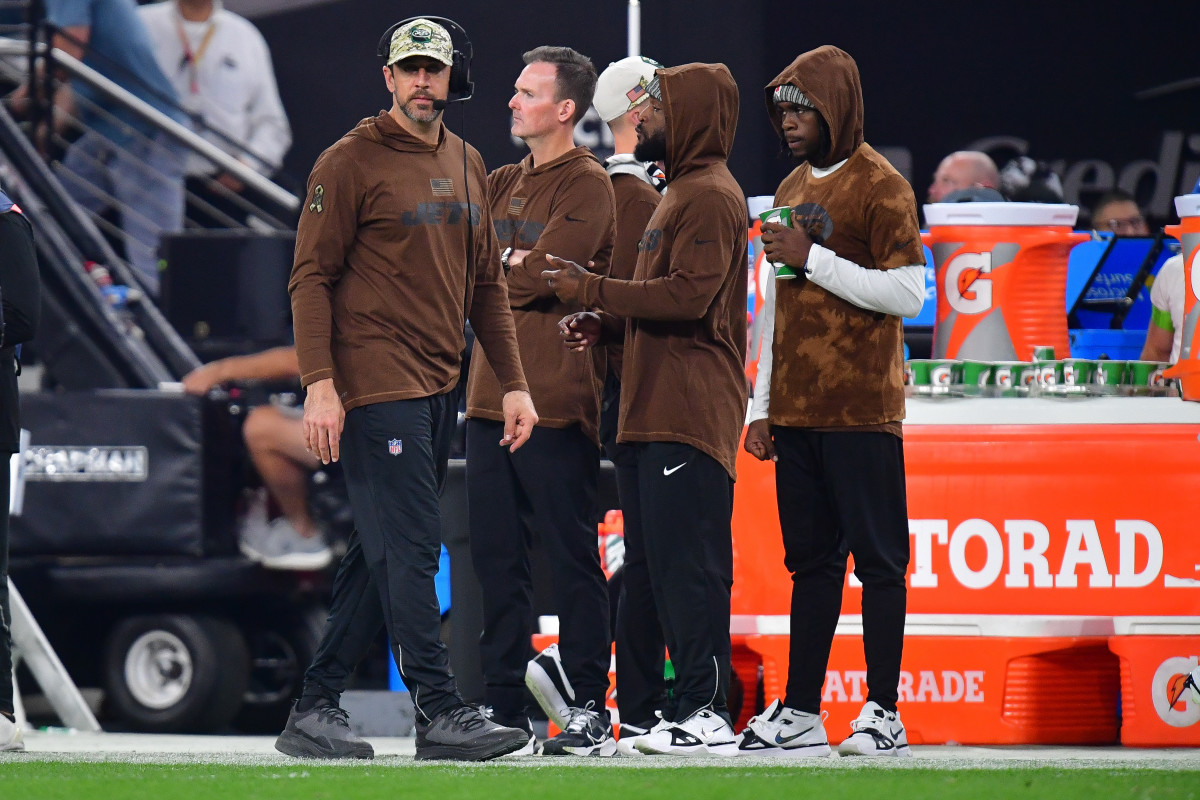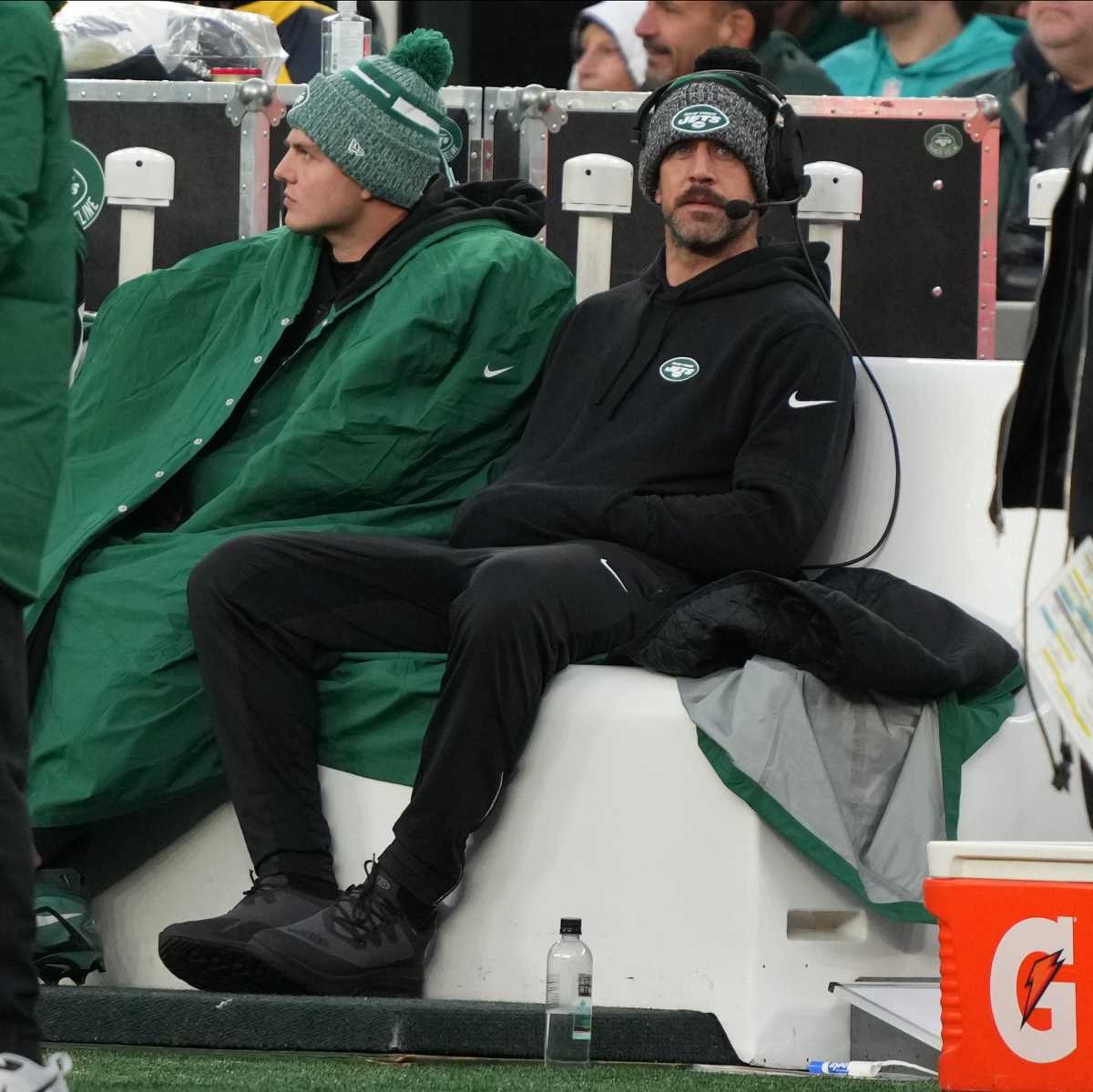The Jets Need to Play Aaron Rodgers This Season—No Matter What
The 21-day practice window has officially opened for Aaron Rodgers to return to play. Rodgers has already said that his own personal health, combined with the playoff positioning of the Jets, will ultimately determine whether we see him on the field at all during the 2023 season. So, today’s little administrative tidbit could either mean something, or closer to nothing. With the 4–7 Jets on their third quarterback of the season, and a sneakily competitive schedule down the stretch, we are more inclined at the moment to believe this is simply something to talk about.

However, I would like to present a case for Rodgers playing this year, no matter what. I can already hear you on two different levels. We shouldn’t be telling someone what to do with their own personal health. Noted. Agreed. On a larger scale, we should not be inviting a very, very, very soon-to-be 40-year-old man to vigorously run around on a practice field and in games just 11 weeks after he tore his Achilles. Also noted, and confirmed after having recently seen a video of my racing someone and getting a gruesome picture of the male athletic form post-35.
The flip side is we need to have some concept of what Rodgers and the Jets are together, outside of a few weeks of training camp practice and a preseason drive against the Giants (a team that is certainly plucky, and well coached defensively, but is nowhere near one of the top defenses in the NFL). I’m sure the combination is great. But the Jets have to be a hell of a lot more convinced than some sportswriter without—to borrow a phrase from a legendary umpire argument with Mets manager Terry Collins—his you-know-what in the jackpot.
If Rodgers is healthy enough to practice and, eventually, healthy enough to play, he carries a risk of reinjuring his Achilles on a drop-back pass in New York’s Jan. 7 season finale against the Patriots. He carries a lower risk of doing the same thing on the first training camp practice of July 2024. But there is always going to be a non-zero chance that Rodgers is somewhat vulnerable.
My caveat here is what we mean by “healthy enough to play.” Rodgers has not been doing a lot of explosive movements. How do they look and how does he feel after periods of greater strain? What are the readings on his calf strength, for example? How do his inflammatory markers look? If the data is in an acceptable range, the value for the team’s long-term planning purposes has to (at least in the minds of the Jets) usurp whatever actuarial risk-differential the team is looking at between Rodgers’s overall health in late December versus his overall health in late July. If the Jets were on the cusp of playoff contention, and Rodgers came back to start one wild-card game, theoretically against a team with a top-12 pass rush, the Jets would be taking a risk for (likely) minimal gain, anyway. I understand that, at face value, a meaningless regular-season finale is the very definition of minimal gain, but not when it’s placed in the context of what the Jets need to wholly support and get behind this experiment for another year.
Given the way the Zach Wilson experiment ended, with a second offensive coordinator and similar results, the Jets will most likely have to draft a quarterback in 2024, no matter what Rodgers shows them on the field. They will also, in fear of an optical wrath the likes of which even New Yorkers have rarely seen, have to bolster the depth chart with veteran help behind Rodgers, no matter what.

The difference, though, lies in the aggressiveness with which the Jets check all of those boxes. If Rodgers comes back, looks clean and efficient, and displays the capabilities of doing theatrical Rodgers-type football supernaturalism, then great. We can live with a third-round pick and Jacoby Brissett for the start of the 2024 season. But if Rodgers looks unstable, or if he shows an unwillingness to operate behind a less-than-idyllic offensive line, the parameters change. (Side note: New York’s offensive line isn’t going to be overwhelmingly dependable or elite next season, even as some top players such as Alijah Vera-Tucker make their way back to the field.) The Jets need to be in higher-level conversations. No matter what, a living, breathing sample size of live game action will help the front office optimize its understanding of what a ’24 roster has to look like. I say has to, because it’s hard to imagine Woody Johnson not throwing into motion the emergency eject protocol if the Jets fail to make the playoffs next year.
Starting Rodgers’s practice window now will certainly help to provide some of that sample size. Now, the quarterback can throw to other Jets players, which is ultimately the most important takeaway from all of this. Sure, the Jets can begin to piece together their plans for 2024, almost like a group of Formula One mechanics, with a piece of extraordinarily amazing but fragile equipment that doesn’t lend itself to much outside of race day. Or, the Jets can approach Rodgers with a plan for one or two games to finish the year. To instill confidence in the overall operation. To lay the foundation for another aggressive spring in free agency. To mold the draft board. To create a safety hatch. To be able to do anything more than point to a future that may never come.
